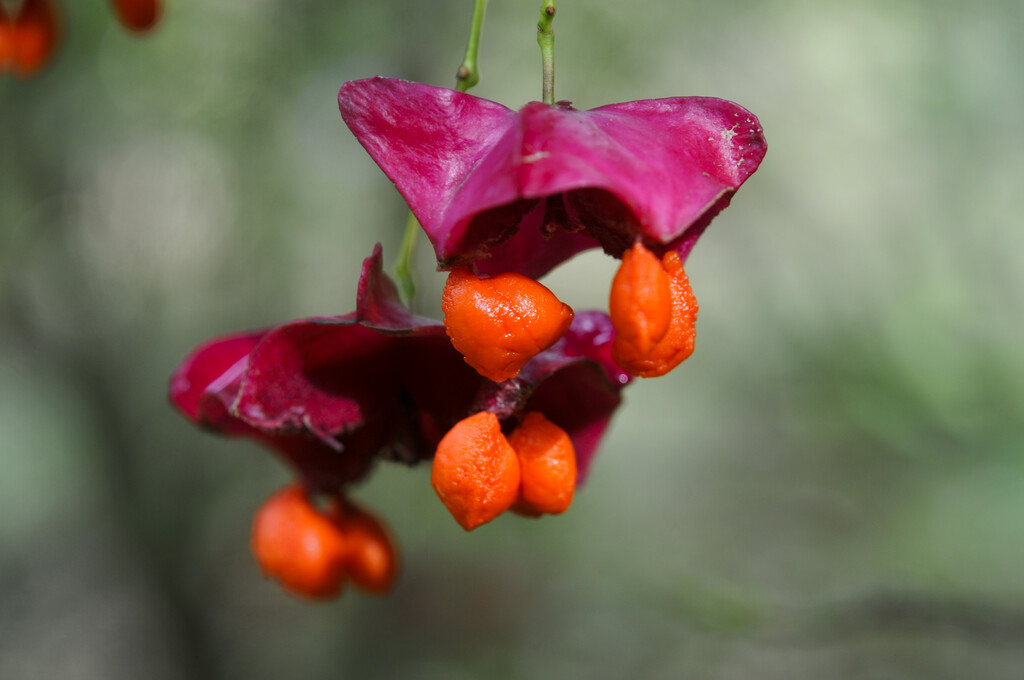Euonymus macropterus
A large deciduous shrub, to around 3m high, with a broadly spreading habit. Leaves are oval, finely toothed and deep green with paler undersides. Clusters of small, greenish flowers are produced in late spring, followed by deep pink, four-winged seed cases that split open to reveal bright orange seeds
Size
Ultimate height
2.5–4 metresTime to ultimate height
5–10 yearsUltimate spread
2.5–4 metresGrowing conditions
Moisture
Moist but well–drained, Well–drainedpH
Acid, Alkaline, NeutralColour & scent
| Stem | Flower | Foliage | Fruit | |
| Spring | Green | Green | ||
|---|---|---|---|---|
| Summer | Green | Pink Orange | ||
| Autumn | Green Yellow | Pink Orange | ||
| Winter |
Position
- Full sun
- Partial shade
Aspect
East–facing or North–facing or South–facing or West–facing
Exposure
Exposed or Sheltered Hardiness
H5Botanical details
- Family
- Celastraceae
- Native to GB / Ireland
- No
- Foliage
- Deciduous
- Habit
- Spreading branched
- Potentially harmful
- Harmful if eaten. Wear gloves and other protective equipment when handling
- Genus
Euonymus can be deciduous or evergreen shrubs or small trees, often with fine autumn colour, and small flowers followed by colourful fruits
- Name status
Correct
- Plant range
- E & N Asia
How to grow
Cultivation
Grows in most well-drained soils in sun or part shade; may be slow growing in very acid soils
Propagation
Propagate by seed or by softwood cuttings in summer
Suggested planting locations and garden types
- City and courtyard gardens
- Cottage and informal garden
- Architectural
- Low Maintenance
Pruning
Minimal pruning required, see pruning group 1
Pests
May be susceptible to vine weevil, horse chestnut scale, euonymus scale and caterpillars
Diseases
May be susceptible to powdery mildews and a leaf spot
Get involved
The Royal Horticultural Society is the UK’s leading gardening charity. We aim to enrich everyone’s life through plants, and make the UK a greener and more beautiful place.
